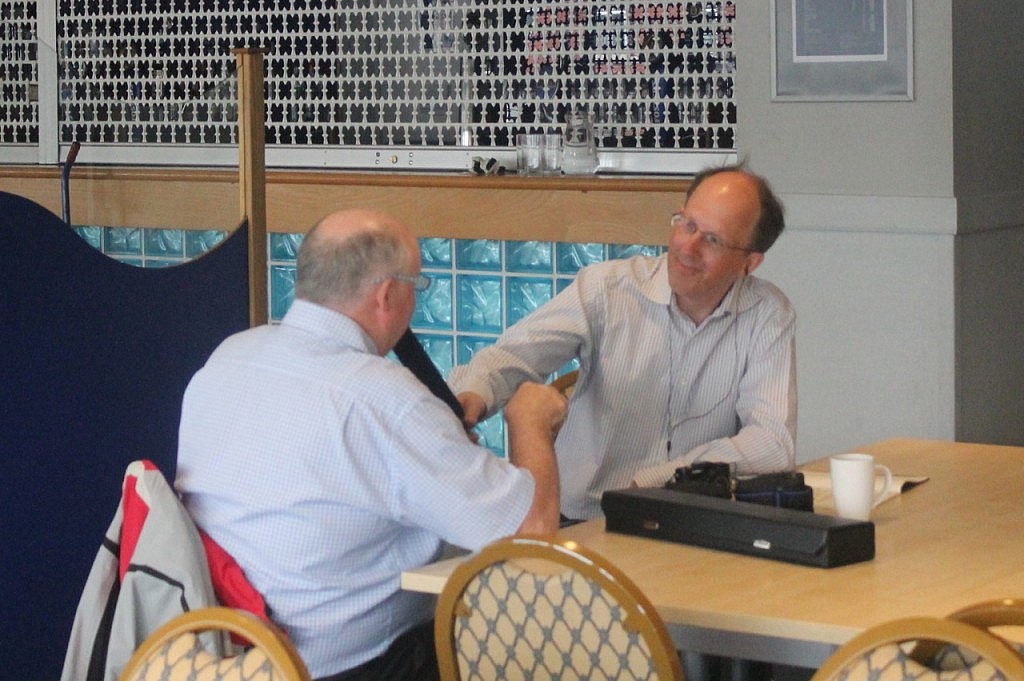My mother has Alzheimer’s disease – I first suspected some form of dementia when her friends told me that she didn’t dance anymore. Of course she insisted she did, but it was clear she had “forgotten” the steps in a way that was beyond the forgetfulness of getting older.
 As a European snow bird she would travel to Malta each year to escape the damp, grey English winters. One year when I visited her in Malta, I noticed when she went up to the hotel dinner buffet, she could not “remember” where to return to.
As a European snow bird she would travel to Malta each year to escape the damp, grey English winters. One year when I visited her in Malta, I noticed when she went up to the hotel dinner buffet, she could not “remember” where to return to.
With a blank and vacant look she would gaze out hoping to find a clue that jarred her memory. Friends gently directed her to the right table and diffused the embarrassment with humor.
Sadly during my visit I saw that she could no longer remember the names of people she had holidayed with for 10 years each winter, or what clothes she had worn the day before. Her holiday companions and the hotel treated her with kindness, but it was the beginning of a decline, and her last winter in Malta.
At home, she has struggled to manage activities of daily living and the need for care has increased. As a family, we’ve endeavored to support her independence for as long as possible, but a nursing home is now in the not too distant horizon.
Which is why I have a personal interest in Alzheimer’s disease. It’s an area where innovation needs to catch up with demand for treatment and therapies, not to treat it when it’s happened – it’s too late to untangle the damage, but to delay it’s occurrence in those at risk.
This week in the New England Journal of Medicine (NEJM), research showed that continued treatment of moderate to severe Alzheimer’s disease with donepezil (Aricept) provides modest cognitive and functional benefits.
By the time moderate to severe disease has set in, the damage has already been done, and the train has left the station metaphorically speaking. Those with this status require the support of caregivers. This study was undertaken in community-dwellings i.e. some form of nursing home or care facility.
In their NEJM paper, Robert Howard of the Institute of Psychiatry & UK colleagues assessed changes in Standardized Mini-Mental State Examination (SMMSE) & Bristol Activity of Daily Living (BADLS) scores in moderate to severe Alzheimer’s patients who received donepezil or memantine in a double-blind, placebo controlled trial.
Patients continued to decline over the course of the study, so what the study showed was that by giving a cholinesterase inhibitor, the rate of decline was slowed. The functional benefit was equivalent to 32% of the total deterioration seen over 12 months.
However, dramatic as this significant benefit sounds, the author’s rightly caution that the improvements in cognition and function were small relative to the overall decline in cognitive and functional status seen in all patients.
While this paper offers evidence-based medicine for the continuation of donepezil in those with moderate to severe disease, this treatment does not lead to a cure or restoration of function.
A study sample size of 430 was estimated to give a 95% power to detect a 1.0 point difference in SMMSE scores between donepezil and placebo groups, and 90% power to detect a 2.0 point difference. In the end a total of 295 participants were enrolled.
The results showed that:
“Patients who were assigned to continue taking donepezil, as compared with those assigned to discontinue donepezil, had scores on the SMMSE that were higher (indicating better cognitive function) by an average of 1.9 points (95% CI, 1.3 to 2.5; P<0.001) and scores on the BADLS that were lower (indicating less functional impairment) by an average of 3.0 points (95% CI, 1.8 to 4.3; P<0.001).”
The researchers noted that:
“The severity of dementia at entry significantly influenced the effect of donepezil on SMMSE scores, with larger benefits observed in patients with moderate disease (SMMSE score, 10 to 13) than in those with severe disease (SMMSE score, 5 to 9).”
More information on the study design and detailed results can be found in the published NEJM paper.
My Mother takes donepezil and I’m pleased to see that there’s now some clinical data to support its continued use, as she will no doubt progress.
All those with loved ones who have Alzheimer’s will be pleased with any news that delays the progression of this debilitating disease.
Reference

Howard, R., McShane, R., Lindesay, J., Ritchie, C., Baldwin, A., Barber, R., Burns, A., Dening, T., Findlay, D., Holmes, C., Hughes, A., Jacoby, R., Jones, R., Jones, R., McKeith, I., Macharouthu, A., O’Brien, J., Passmore, P., Sheehan, B., Juszczak, E., Katona, C., Hills, R., Knapp, M., Ballard, C., Brown, R., Banerjee, S., Onions, C., Griffin, M., Adams, J., Gray, R., Johnson, T., Bentham, P., & Phillips, P. (2012). Donepezil and Memantine for Moderate-to-Severe Alzheimer’s Disease New England Journal of Medicine, 366 (10), 893-903 DOI: 10.1056/NEJMoa1106668

 We recently wrote about
We recently wrote about 


 During my visit to Goodison Park, I spoke with Everton FC Community Engagement Manager, Henry Mooney (
During my visit to Goodison Park, I spoke with Everton FC Community Engagement Manager, Henry Mooney (



 As a European snow bird she would travel to Malta each year to escape the damp, grey English winters. One year when I visited her in Malta, I noticed when she went up to the hotel dinner buffet, she could not “remember” where to return to.
As a European snow bird she would travel to Malta each year to escape the damp, grey English winters. One year when I visited her in Malta, I noticed when she went up to the hotel dinner buffet, she could not “remember” where to return to.
